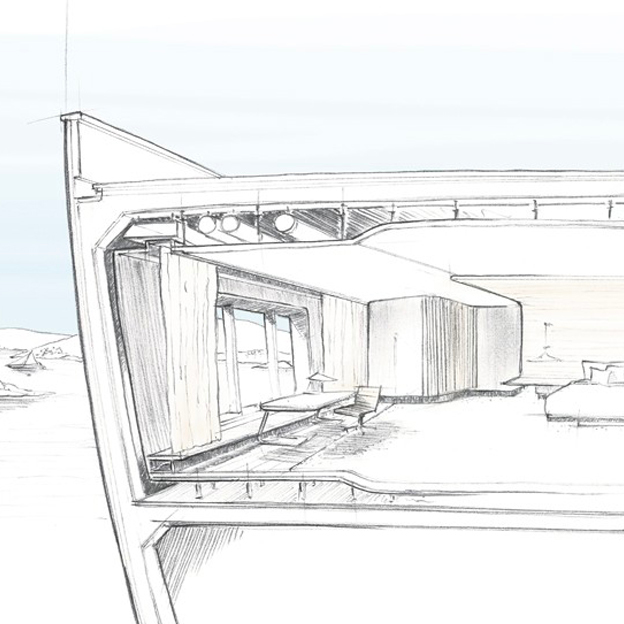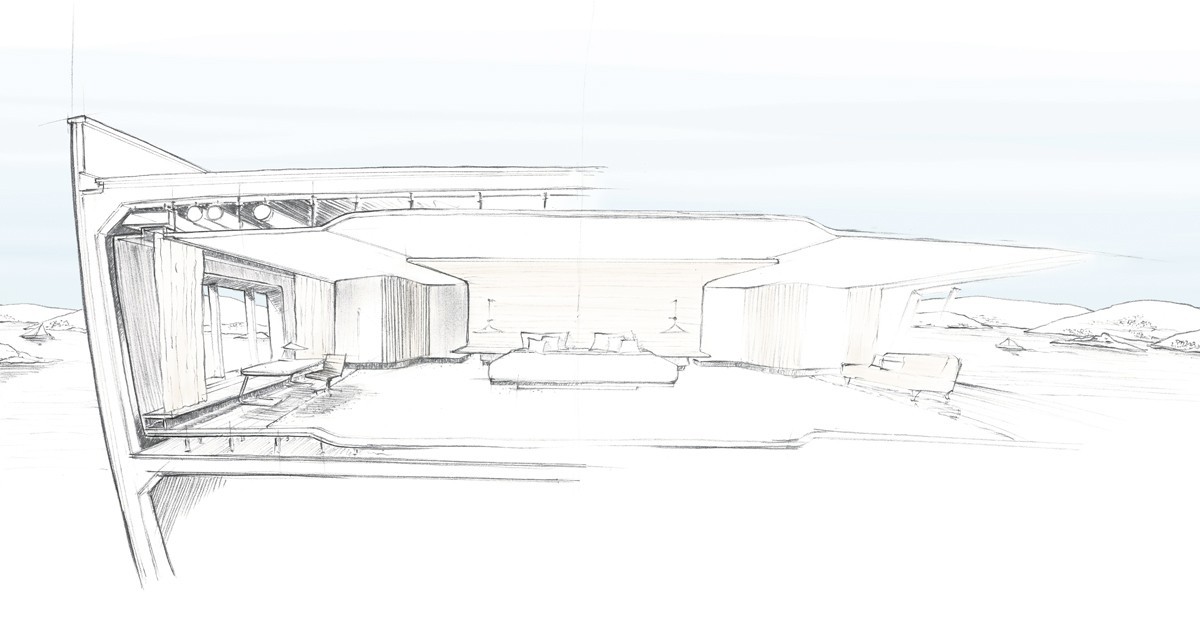Blog
How Do You Marry An Interior To Water?
05 January 2021

An interior on water can sound like a paradox – a seemingly static, dry, internal space in a constantly changing, moving, wet environment.
A unique challenge, with numerous factors to consider.
The initial starting point is the same as with our residential projects - building up an understanding of the client’s needs, expectations and vision. The design of such a project is then driven, very early on, by the complex and numerous technical decisions to be made, alongside the relationship the yacht will have within the natural surroundings it will be in.
The technical aspect is what makes a yacht project inherently different to any land based projects.
There is always a relationship between a design and the context in which it needs to perform and is what makes each yacht project unique and engaging.
How could it relate to the physical and emotional surroundings? What will be the climate at different cruising destinations? Who will be using the space and how? How can this interior excel for comfort, practicality and maintenance within all these parameters? And still look exquisite ?
The whole process has another layer of interest, with the network of skills and relationships that are woven into the final outcome. There is the exterior design of the yacht setting the tone for character of the yacht. And if the interior and exterior design are created cohesively the whole package achieves a much better balance in creating value for the end-user.
Diving a little deeper into the build process, is where you can start to appreciate all the layers of structure, insulation, technology, build practices, material impact, and of course performance.
When looking at the overall performance information for a yacht usually the first stats are about safety on board, range, speed, seakeeping, interior volume in relation to its overall length. No doubt these are all vitality important, but there are many more aspects that are needed for a yacht interior to perform.
There is climatization in different climate zones, as well as accommodating the humidity produced by the sea, the electronics of the navigations and for the onboard entertainment system, the knowledge to avoid vibrations and noise, of generators and end engines at different speeds.
The list goes on over drainage, mooring, tender launching, fresh and wastewater, waste, storage, fire zones, watertight compartments, crew and guest circulation as well as escape routes to only mention a few further points. These aspects not only have to be considered in advance but at the same time have to be integrated so the yacht can be operated safely, accessed, serviced and maintained.
A further vital aspect that will make sure that the vessel will retain value over time.
This is the main area of difference between yacht and land interiors and key to successfully applying an interior to water. The technical and safety requirements are greater in volume and complexity and to design a vessel, you must have an advanced knowledge of this. It will only enhance the design, which in turn enhances the user experience on board, which in turn creates more value for the owner.
(As a side note, along with the familiar high level of interior specification, the scope of these technical requirements are the main contributors to the cost of the vessel)
Finally, great achievements are reached when everything slots together like a well-oiled machine and when the technical knowledge enhances the creative possibilities. When this creativity is touching and propelling people along the way to contribute with their own creativity, to form as a team the best overall solution for the client and the project.
A masterpiece incentivised by the client, produced by many masters of their trade, coming together to bring to life a great piece of technological and aesthetic achievement.
